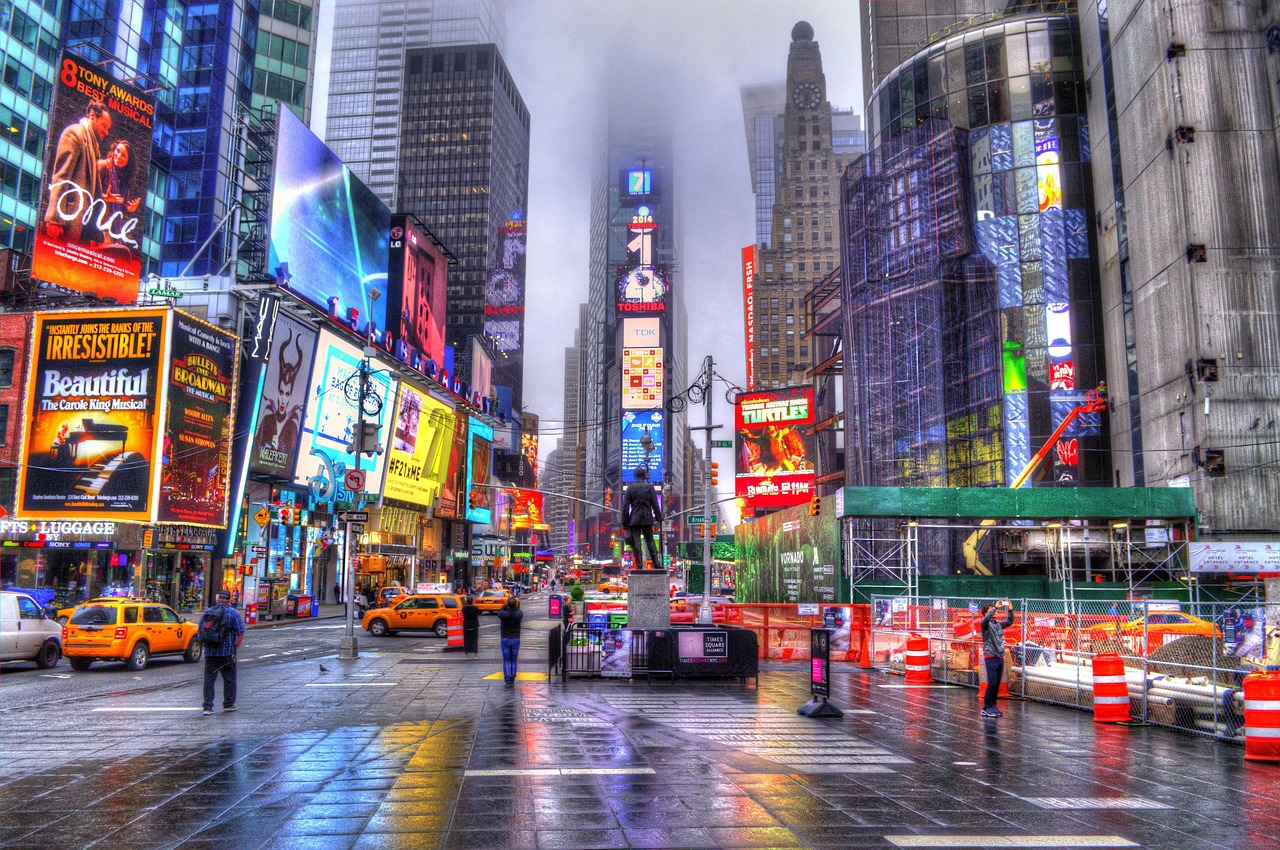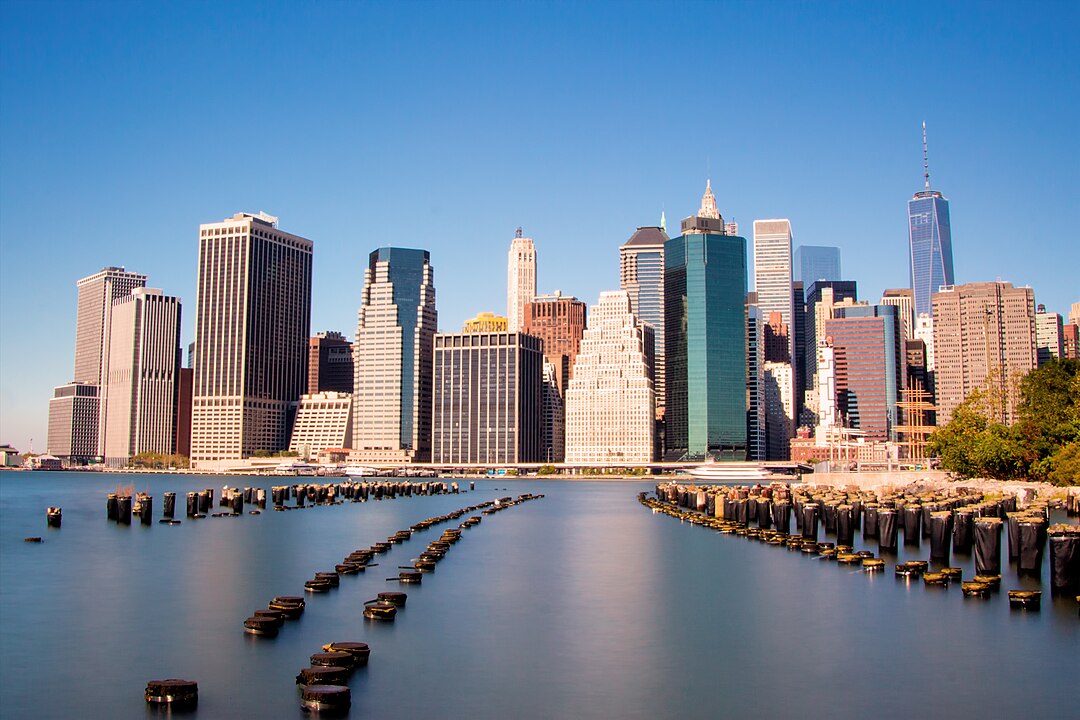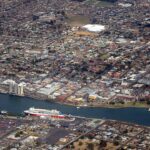Quick Bits:
Manhattan beats like the vibrant heart of New York City. It’s a name that conjures images of towering skyscrapers, yellow taxis, and the never-sleeping buzz of the Big Apple. It offers a seamless blend of ambition, history, glamour, grit, and culture. Every street corner echoes with stories.
A borough that plays host to world-class arts, finance, media, and fashion, Manhattan is more than a place – it’s a global icon.

Image by: Sarowar Hussain – Via Pixabay
Key Highlights
- Skyscrapers – Home to iconic towers like the Empire State Building.
-
Central Park – A massive green escape in the city’s core.
-
Times Square – Bright, bustling, and full of life day and night.
-
Broadway – The heart of world-famous theater and musicals.
-
Wall Street – Global financial center with historic landmarks.
-
The Met & Museums – Rich collections of art, history, and culture.
General Information
Manhattan is one of five boroughs of New York City. It’s the most densely populated and arguably the most famous. It consists mainly of Manhattan Island, bordered by the Hudson River to the west, the East River to the east, and the Harlem River to the north. Beyond the island, the borough includes smaller islands such as Roosevelt Island and Governors Island.
Basic Stats:
-
Population: Around 1.6 million
-
Area: 22.8 square miles
-
Official Language: English
-
Currency: US Dollar
-
Time Zone: Eastern Standard Time (EST)
Manhattan serves as the economic and administrative center of New York City. Wall Street resides here, making it the pulse of American finance. It is also home to the United Nations headquarters, museums, concert halls, Broadway theatres, and towering monuments.

Image by: Julien Vanhaute – Via Pixabay
Geography Information
Manhattan has a unique geography that has played a key role in its growth. It is long and narrow—just 13.4 miles from north to south and 2.3 miles at its widest point.
Natural Borders:
-
West: Hudson River
-
East: East River
-
North: Harlem River
-
South: New York Harbor
The borough is connected by dozens of bridges and tunnels, including the Brooklyn Bridge, George Washington Bridge, and Lincoln Tunnel. The grid layout of streets makes navigation clear-cut. The numbered streets run east-west, while avenues run north-south.
Central Park, stretching across 843 acres, breaks the urban flow with a natural oasis in the middle. Manhattan’s geology—solid bedrock close to the surface—also made it ideal for skyscraper construction.

Image by: Shire777 – Via Pixabay
Places to Visit
1. Central Park
This urban park is a retreat from the concrete sprawl. Walk the shaded paths, row a boat on the lake, or visit the zoo. Musicians, joggers, picnickers, and horse-drawn carriages share the space.
2. Empire State Building
A symbol of human ambition and art deco elegance, the Empire State Building offers sweeping views from its observation decks. Day or night, the skyline dazzles.
3. Times Square
Lit by digital billboards and alive with energy, Times Square remains a spectacle. It’s the epicenter of New Year’s Eve celebrations and a top spot for selfies.
4. The Metropolitan Museum of Art
Art lovers flock to “The Met” for its sweeping collection. From Egyptian mummies to European masterpieces, the museum offers a walk through history.
5. Statue of Liberty (via ferry)
While technically on Liberty Island, the journey begins in Manhattan. The statue stands as a beacon of freedom and a reminder of New York’s immigrant roots.
6. Wall Street and the Financial District
See the New York Stock Exchange and the Charging Bull sculpture. This neighborhood buzzes with ambition and global finance.
7. Broadway Theaters
Catch a world-class production in the Theater District. Whether it’s a musical, drama, or comedy, Broadway has it all.
8. High Line
An elevated park built on a former railway track, the High Line offers gardens, art, and city views with a modern twist.
9. Fifth Avenue
This shopping mecca mixes luxury brands, department stores, and historic landmarks. It’s a must-stroll for shopaholics and window-shoppers alike.
10. 9/11 Memorial & Museum
A solemn but vital stop, the memorial honors those lost in the 2001 attacks. Reflecting pools sit where the towers once stood.

Image by: Jürgen Kreuzer – Via Pixabay
Yearly Climate
Manhattan has four distinct seasons, each with its charm and challenges.
| Season | Temperature Range | Notes |
|---|---|---|
| Winter | 28°F – 43°F (-2°C – 6°C) | Snow possible, crisp air, holidays |
| Spring | 45°F – 70°F (7°C – 21°C) | Cherry blossoms, warming weather |
| Summer | 70°F – 90°F (21°C – 32°C) | Hot, humid, packed events |
| Fall | 50°F – 75°F (10°C – 24°C) | Cool, colorful, pleasant walks |
Humidity can rise in summer. Winters bring snowstorms, but also scenic cityscapes. Spring and fall are gentle on the senses, perfect for exploring.
Best Time of Year to Visit
Spring and fall win hands down. In April and May, flowers bloom and temperatures stay mild. September and October bring golden leaves and fewer crowds.
Why Spring Works:
-
Nature bursts into color
-
Ideal for walking and biking
-
Park events begin
Why Fall Charms:
-
Crisp air and changing leaves
-
Cultural season reopens—new plays, exhibits
-
Less tourist rush after summer
Holiday season in December also draws many. The Rockefeller Center tree, ice rinks, and store windows sparkle. Summer has long days and outdoor events but can get crowded and sweaty.

Image by: Vik Waters – Via Wikipedia
In Summary…
Manhattan isn’t merely a destination—it’s a world within a city. From global finance to fine arts, street food to Michelin stars, it has a pace and power that few places match. Walk a few blocks and the scenery changes from bustling commerce to historic brownstones.
Whether it’s your first time or fiftieth, there’s always something new. The skyline evolves. Neighborhoods bloom. Manhattan stays ageless.





